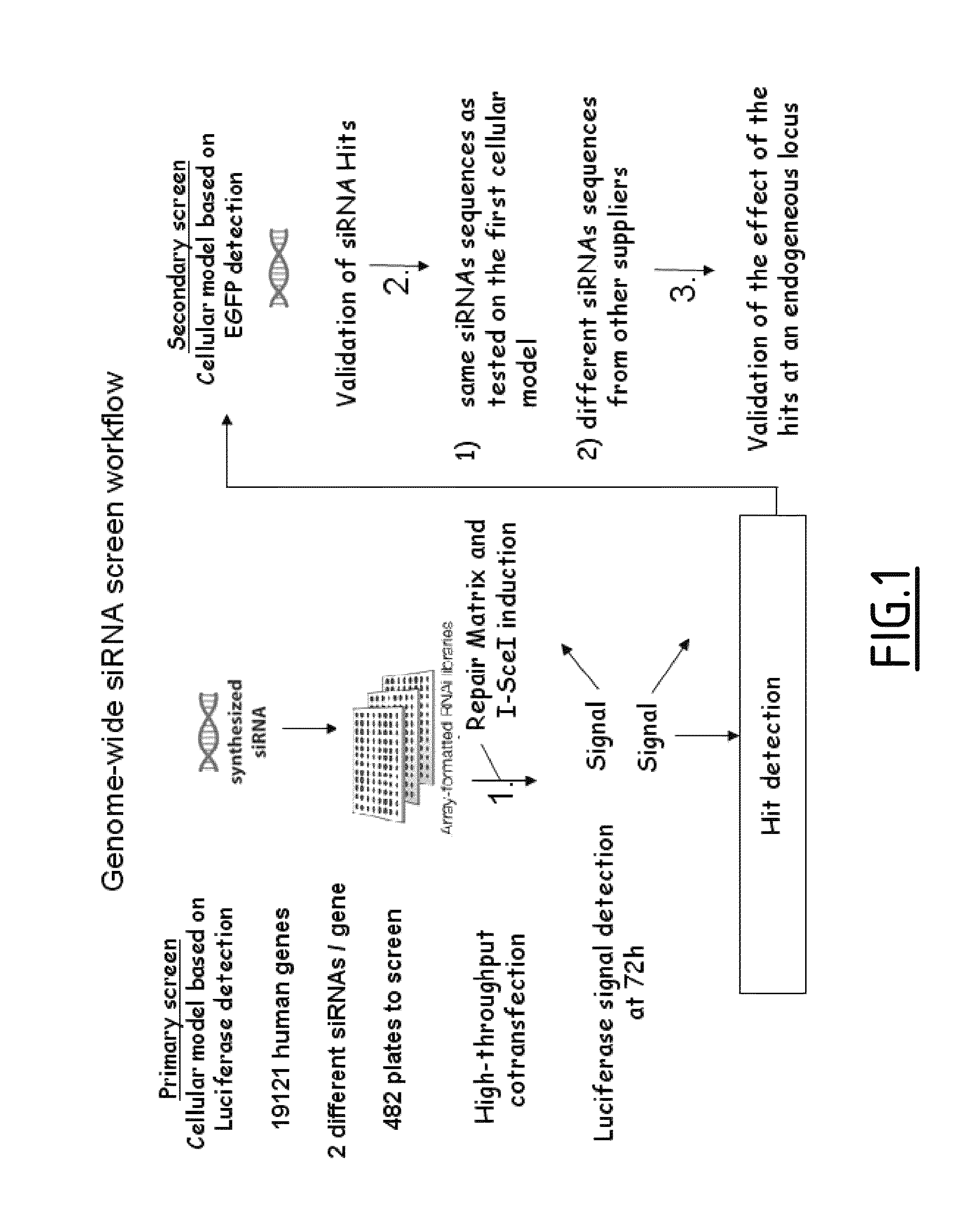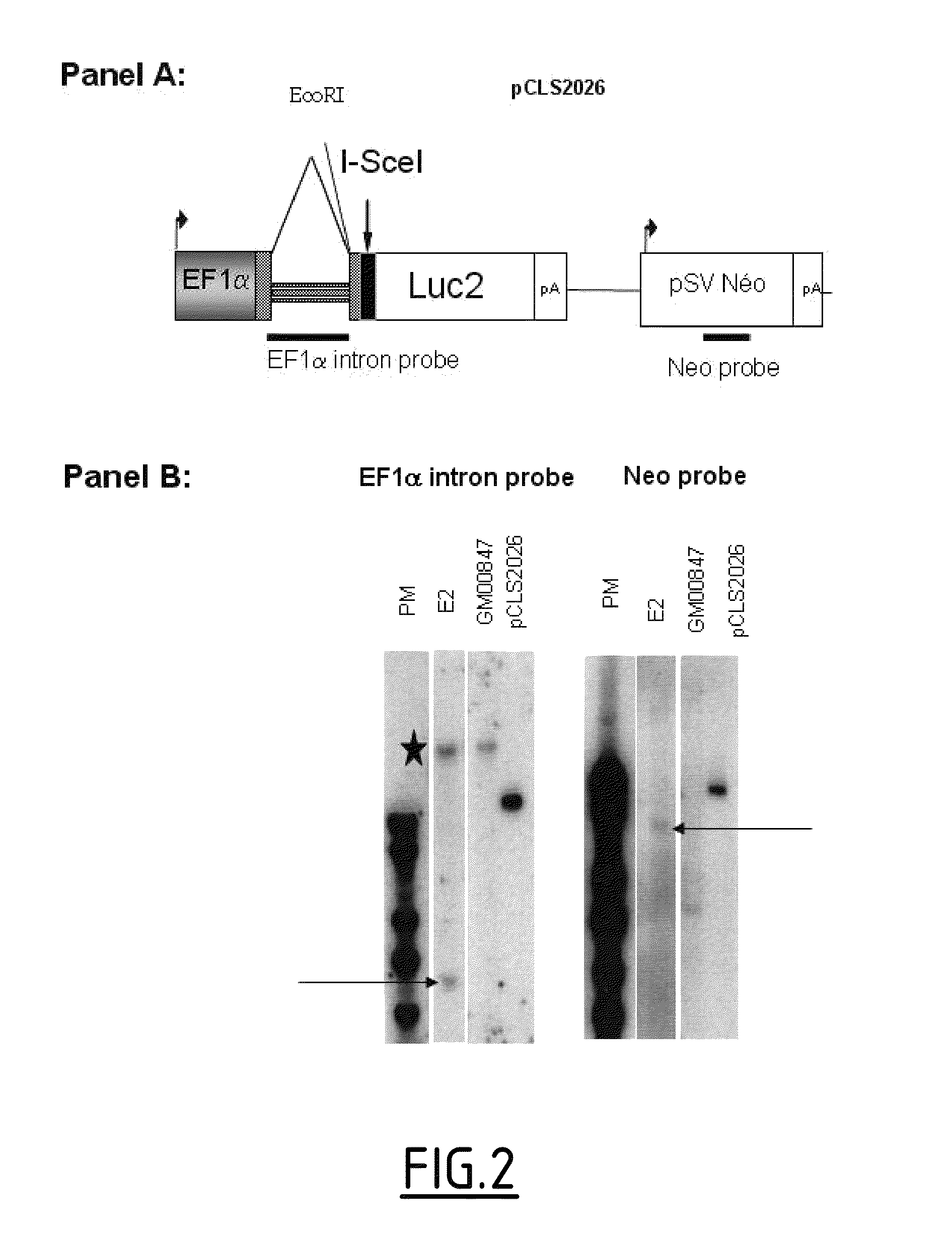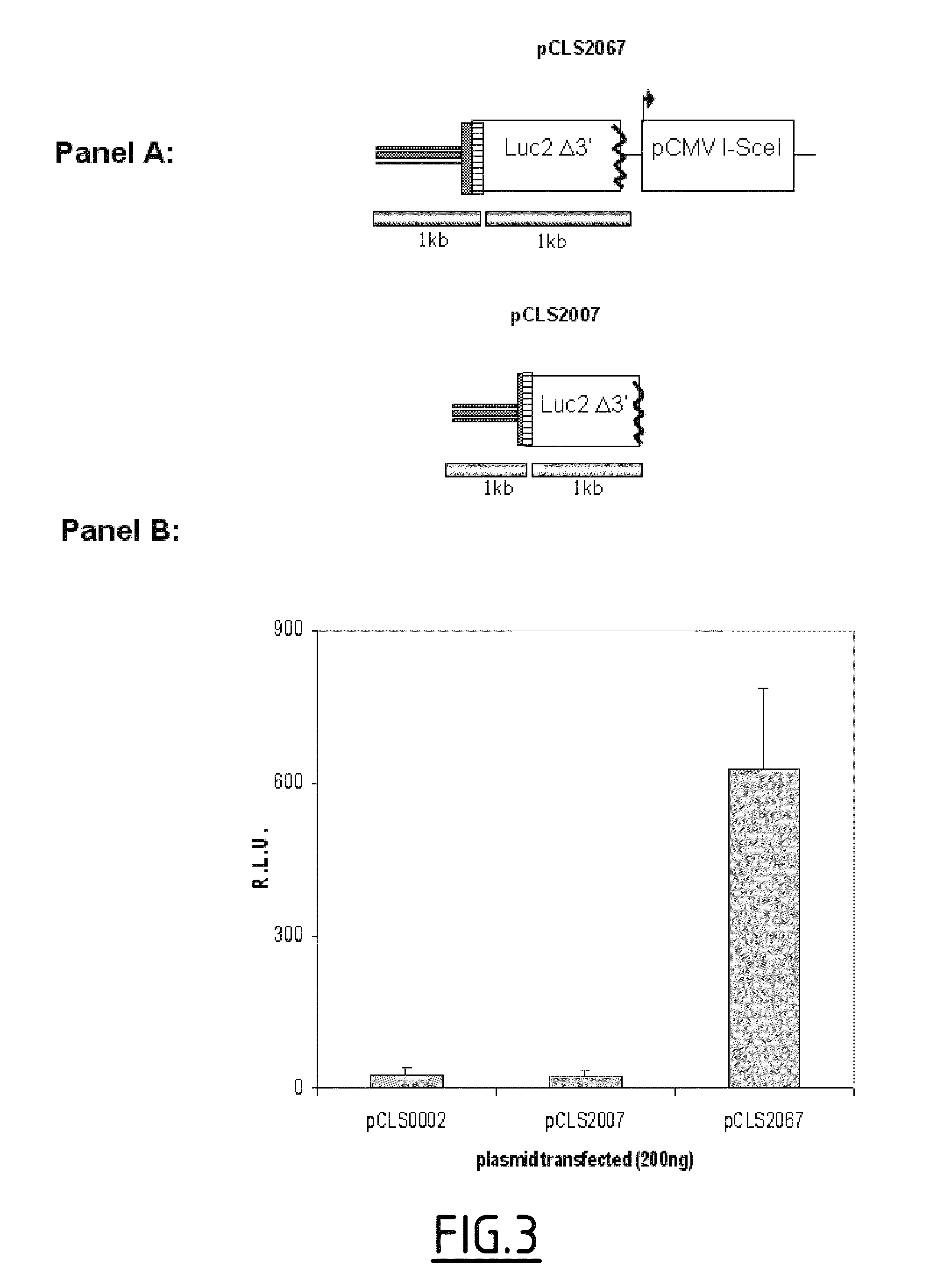Method for modulating double-strand break-induced homologous recombination
a technology of homologous recombination and double-strand break, which is applied in the field of modulating double-strand break-induced homologous recombination, can solve the problems of low process efficiency, limited use of enzymes, and difficult application
- Summary
- Abstract
- Description
- Claims
- Application Information
AI Technical Summary
Benefits of technology
Problems solved by technology
Method used
Image
Examples
example 1
Establishment of Cell Lines Measuring I-Scel Induced Gene Targeting
[0285]Two cell lines to measure I-Scel induced gene targeting have been established. The first model based on Luciferase gene reporter was established for a high throughput screening. The second model based on GFP reporter system measures I-Scel gene targeting frequency and was used during the secondary screening.
[0286]1.1. Luciferase Reporter Based Model in GM00847
[0287]To measure gene targeting in a high-throughput screening (HTS), a cell line based on Luciferase gene reporter system has been constructed. Since gene targeting efficiency is low in human cell line the Luciferase reporter system was chosen because of its high sensitivity. Finally, co-transfection of siRNA and DNA strategy was chosen for technical and throughput reasons.
[0288]1.1.1. Materials and Methods
[0289]Cell Culture
[0290]Cell line GM0847 (skin human fibroblasts) was cultured at 37° C. with 5% CO2 in Dulbecco's modified Eagle's medium (dMEM) Gluta...
example 2
siRNA Screening
[0326]A siRNA collection from QIAGEN was screened using the model measuring I-Scel induced gene targeting and based on luciferase reporter system. This siRNA collection target 19121 genes with two different siRNAs per gene. For each siRNA, co-transfection with pCLS2067 (SEQ ID No. 2) were performed in duplicates. The screen lead to identification of 599 and 355 hits stimulating and inhibiting the luciferase signal respectively.
[0327]Materials and Methods
[0328]siRNA Dilution
[0329]The siRNA collection from QIAGEN was received in 96 well plate format in solution at 10 μM concentration. On each plate columns 1 and 12 were empty allowing controls addition. During dilution process of siRNA at 333 nM concentration, H2O, siRNA AS (Qiagen #1027280), a negative control, siRNA RAD51 (SEQ ID No. 5) siRNA LIG4 (SEQ ID No. 6), two positive controls were added at 333 nM final concentration in empty wells.
[0330]HTS I-Scel Gene Targeting Assay:
[0331]Fourteen thousand cells per well we...
example 3
Validation of the siRNAs Hits on New Cellular Model
[0338]The high-throughput screening of the siRNA human genome wide library has allowed identifying several hundreds of potential hits leading to an increase of the I-Scel luciferase signal.
[0339]To correlate such effect to an improvement of the gene targeting efficiency induced by I-Scel, siRNAs were tested in the new cellular model described in example 2.2 with the read out of a different reporter gene.
[0340]Material and Methods:
[0341]Double Resistant cGPSHEK293 PuroR NeoR Cell Line Culture Conditions
[0342]Same protocol as described in example 2.2 except that the complete culture medium DMEM Glutamax medium with penicilline (100 UI / ml), streptomycine (100 μg / ml), amphotericine B (Fongizone) (0.25 μg / ml), 10% FBS is supplemented with 0.2 mg / ml of G418 sulfate (Invitrogen-Life Science) or 0.4 μg / ml of puromycin.
[0343]Cellular Transfection in 96 Well Format for Functional Validation of siRNAs Hits
[0344]Same protocol of cotransfection ...
PUM
 Login to View More
Login to View More Abstract
Description
Claims
Application Information
 Login to View More
Login to View More - R&D
- Intellectual Property
- Life Sciences
- Materials
- Tech Scout
- Unparalleled Data Quality
- Higher Quality Content
- 60% Fewer Hallucinations
Browse by: Latest US Patents, China's latest patents, Technical Efficacy Thesaurus, Application Domain, Technology Topic, Popular Technical Reports.
© 2025 PatSnap. All rights reserved.Legal|Privacy policy|Modern Slavery Act Transparency Statement|Sitemap|About US| Contact US: help@patsnap.com



